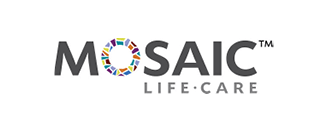Developing clinically integrated and digital healthcare supply chains
As we embark upon 2023, we’re reading a lot about Digital Front Door (DFD) Platforms. These platforms are working with or replacing patient portals to create more holistic and personalized patient experiences.
Although it’s easy to assume DFD platforms are far removed from the supply chain world, it’s more complicated than that. In order to deliver efficient and cost-effective healthcare, aligning supply chain logistics with clinical operations is crucial.
In fact, a recent article from Gartner® states that “by 2026, 20% of healthcare providers will adopt real-time health system supply chain platforms” and will look to “disrupt and transform healthcare supply chain logistics by making them more situationally aware, collaborative, smart and clinically integrated.”
Digital solutions are transforming healthcare (even from behind the scenes)
Real-time visibility
Supply chain management takes place largely behind the scenes, but its results have a huge impact on the patient experience.
When critical products aren’t in the right place at the right time, surgeries may have to be delayed or canceled. Additionally, rescheduling can be a challenge if clinicians don’t know when products will arrive.
To ensure inventory levels are in check, leaders of digital healthcare supply chains depend on technology with real-time visibility. This insight allows them to avoid last-minute ordering and overbuying in order to have excess inventory on hand.
On-demand data and analytics
Real-time data also plays an important role in the patient journey. U.S. hospitals and healthcare systems continue to face unprecedented net losses in income and are eager to reduce costs. According to a 2022 article on ISHN.com, “real-time data has helped the supply chain alter payment models while bolstering its profits.”
By accessing and interpreting important data, supply chain leaders can determine where to reduce prices and how to mitigate disruptions.
The resources saved can then be used to improve patient care or to forecast additional needs in the future. Perhaps most helpful is when software for digital healthcare supply chains can be integrated into the hospital. Technology and automation are key to reducing time spent online and reducing potential human error.
Finding the right partner to innovate your supply chain operations
VPL is committed to helping supply chain leaders play an even larger part in the patient journey. Our supply chain software provides real-time visibility and data to keep health systems running smoothly and profitably.
Schedule a demo with us to learn more about how we’re making the healthcare supply chain simpler and smarter.































